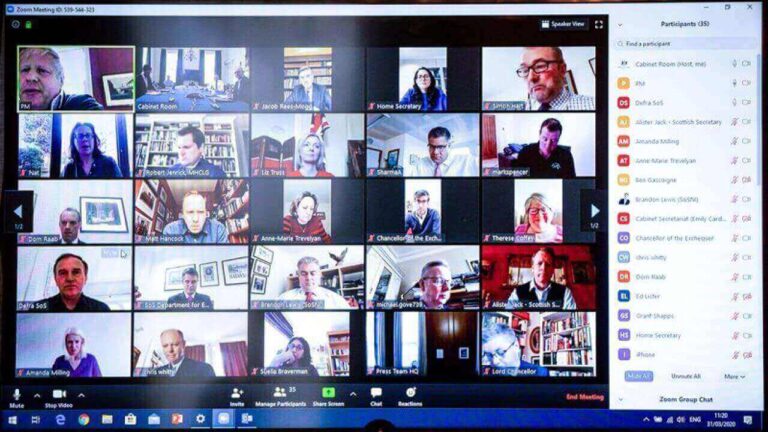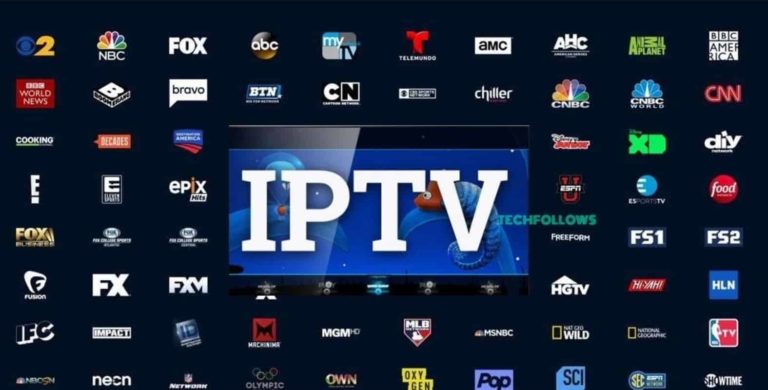10 Best video conferencing apps in 2025 (Free & Paid)
Can't seem to decide on a video conferencing app? We list the top 10 offers here to make it easier for you to choose.

Video conferencing is becoming ever more important. With more team-members working from home than ever before and others scattered around the globe.
Small and large companies are leveraging video conferencing apps to improve work and business efficiency by saving time and costs. So, if you are still on the sidelines, then now is the time to get in.
There are so many offers out there, with many offering something unique. Some are free, while others come with costs and even extra features. The top 10 are listed below with a closer look at each, so you can easily make the right choice.
Top 10 Video Conferencing Apps
| Name | Best For | Participants | Price | Website |
|---|---|---|---|---|
| Zoom | Overall best | 100 | Freemium | zoom.us |
| Google Meet | Integration | 100 | Free | meet.google.com |
| Skype | Free | 100 | Free | skype.com |
| Slack | Team chat | 15 | Freemium | slack.com |
| Zoho Meeting | Features | 100 | Freemium | zoho.com/meeting |
| Cisco Webex | Enterprise Grade | 100+ | Freemium | webex.com |
| Microsoft Teams | Office users | 250 | Freemium | microsoft.com |
| Jitsi Meet | Open source | N/A | Free | jitsi.org/jitsi-meet |
| TeamViewer | Computer access | 10 | $24/month | teamviewer.com |
| Join.me | Simplicity | 250 | Freemium | join.me |
1. Zoom

It is hard to talk about video conferencing these days without mentioning Zoom. Designed for all types of users, Zoom is a video conferencing app that simply works and it also offers a free plan.
Zoom setup is easy, so fewer tech-minded team-members or clients can easily join your calls. Then come video and audio quality. Zoom delivers such an impressive enterprise-grade video and audio that there’s no doubt why it is so popular.
And even those with less stable or slower network connections appreciate how the system keeps things going, even at a lowered bit-rate and quality.
You get a free account for unlimited 1:1 video calls or 40-minute limited group meetings with up to 100 participants.
With $149.99 per year, on the other hand, you get the Pro plan with 1GB cloud recording. Plus the ability to host meetings for up to 30 hours, plus social-media streaming features.
There are larger plans for $199.90 and $350 per year, each with more features, such as branding, domains, and global direct-to-telephone calling. Zoom also offers hardware solutions that work out of the box.
Pros: Simply works, easy to set up, free plan
Cons: 40-minute free plan limit
Website: https://zoom.us
2. Google Meet

There is also Google Meet, formerly called Google Hangouts Meet. It lets you collaborate face to face with team members in a secure environment and on different devices.
You can access the platform from your browser or the Google Meet app for Android or iOS. There is integration with Google apps like Gmail and Calendar, as well as with Microsoft Office apps like Outlook Calendar, and the Google Nest Hub Max.
AI enhancements help to maintain good picture and voice quality and Google Meet includes live captions, so you can interact with non-native speakers and the hearing impaired. Please note, this feature is currently only available in English.
You can sign up for the free version with a 1-hour group meeting limit and up to 100 participants. Or for $8 per month, get up to 150 participants, 100GB storage, and 24-hour group-meeting limits.
Pros: Easy to use, good integration, free plan
Cons: 1-hour free plan limit
Website: https://meet.google.com/
3. Skype

Skype is another very popular video-conferencing app that is also free to use. It started life as a voice call application long before Zoom and the rest but evolved to include video conferencing for up to 100 participants.
Unlike other free offers, Skype’s free conferencing calls can last up to 24 hours. Plus you can record the calls and save them for up to 30 days, automatically blur the background, and share your screen if you need to.
There are also live subtitles, HD-quality resolutions, messaging with reactions, and offline phone calls at affordable rates.
Skype is available as an app for all types of devices, including desktop computers, smartphones, tablets, web browsers, Alexa, and even the Xbox.
Pros: Widely used, includes chat, free
Cons: Limited app integrations
Website: https://www.skype.com
4. Slack
Though Slack is not a full-fledged video-conferencing app, its integration of video conferencing is a big plus to its usefulness as a collaboration app.
You can choose the free plan, which offers only 1:1 voice and video calls between teammates. Or you can choose the Standard plan for $6.67 per month for video conferencing with up to 15 teammates.
Larger plans and other features are available, such as integration with Google, Office, and many more apps. Storage space and a search function are also available for your team’s chats.
But it should be clear that this video-conferencing offer is only worth it if you adopt Slack as your team’s collaboration platform.
Pros: Free plan, collaboration features, integrations
Cons: Limited video features
Website: https://slack.com
5. Zoho Meeting

Small and medium-sized businesses will appreciate the many features of Zoho Meeting, especially those who already use other Zoho software, such as Projects, CRM, and Calendar.
By integrating with these software platforms, Zoho Meeting makes collaboration easier. Plus, it comes with security features, extensive admin controls, recording, sharing, and dial-in-numbers.
You can schedule your meetings through email or embedded links in different Zoho and external apps, get RSVPs, send reminders, and much more.
For pricing, there is a free version with a 3-participant limit, then there is Meeting-10 for 10 participants at $2.50 per month, meeting-25 for $5, Meeting-50 for $7.50, and Meeting-100 for $10 per month.
Pros: Extensive features, admin features, integration, scheduling
Cons: Cheaper plans have fewer participants
Website: https://www.zoho.com/meeting
6. Cisco Webex

Cisco is a technology icon. So, in addition to great video-conferencing features, you can also get great hardware that works out of the box with Webex.
There are so many of them and it is this feature that makes it a great solution for enterprises, which value stability and reliability above all else.
Besides, Webex offers AI transcripts, extensive admin controls, integration with a wide range of apps from Salesforce to Google, advanced layouts, speech enhancements, and security you can rely on.
Webex is available from a free plan with limited features, to Starter, Business, and Enterprise plans. These paid plans come with varying degrees of features, customizations, cloud storage, and so on.
Pros: Enterprise-grade solutions, top hardware, free plan
Cons: Free plan is very limited
Website: https://www.webex.com
7. Microsoft Teams

Office 365 users can benefit a lot from using Microsoft Teams since it integrates deeply into the company’s other products.
The system lets you chat, audio call, video-call, and conference with up to 250 participants. However, you can have up to 10,000 on your team.
You can also collaborate for work using Microsoft Teams and easily share everything from PowerPoint, Excel, and Word.
Teams is available in 53 languages and comes as ready solutions for a wide range of industries, professionals, and user groups. It also lets you connect across iOS, Windows, Mac, and Android systems.
Pros: Microsoft integration, free plan, enterprise-grade
Cons: 60-minute limit for free plans
Website: https://www.microsoft.com/en/microsoft-teams/group-chat-software
8. Jitsi Meet

There are two things here. First, Jitsi is an open-source project that lets you host a video-conferencing server and even lets you build your apps using its Videobridge technology.
Secondly, Jitsi Meet is also an open-source project. It uses the Jitsi Videobridge technology to offer a free, high-quality, encrypted, and anonymous video-conferencing service.
You can use Jitsi Meet to share your desktop and presentations, edit documents together on Etherpad, and chat with fun emojis.
Jitsi is obviously for geeks. So, it is not for those who don’t like tinkering with stuff. However, if you are a developer, then you may want to play a little with it.
Pros: Free, secure, flexible
Cons: It’s only for geeks
Website: https://jitsi.org/jitsi-meet/
9. TeamViewer

TeamViewer is a slightly different software package from others on this list. Sure, it lets you video-conference with up to 10 team members, but it is also built for remote computer access.
You can use it to log into a remote computer and control it as though you were physically there. This feature makes TeamViewer perfect for IT support personnel and other similar groups.
Three plans range from a single user license for $24 per month to a Multi-user license for up to 15 users at $48, and a larger Team package for $94 per month.
TeamViewer also supports Android and iOS mobile devices, Windows, Mac, Linux, Chrome OS, Raspberry Pi, file sharing, remote printing, and other highly technical stuff.
Pros: Remote access package, video-calls, chat
Cons: Very limited
Website: https://www.teamviewer.com/en/info/conference-call/
10. Join.me

It is hard to beat Join.me when it comes to simplicity in online meetings. Starting at $10, you can easily host a meeting for up to 5, but without webcam streams.
For a $20 PRO account though, you get up to 250 participants, with up to 10 webcam streams, scheduling, recording, and up to 50 GB of cloud storage.
Starting a meeting is as simple as a button click, and it is available for iOS and Android, including integration with numerous apps, such as Slack, Outlook, Chrome, Google Workspace, Zapier, and so on.
Pros: Simple system, integrates well
Cons: No free plan
Website: https://www.join.me
Conclusion
We have reached the end of this top 10 video conferencing apps list, and as you must have realized, there are different solutions out there for different user types.




